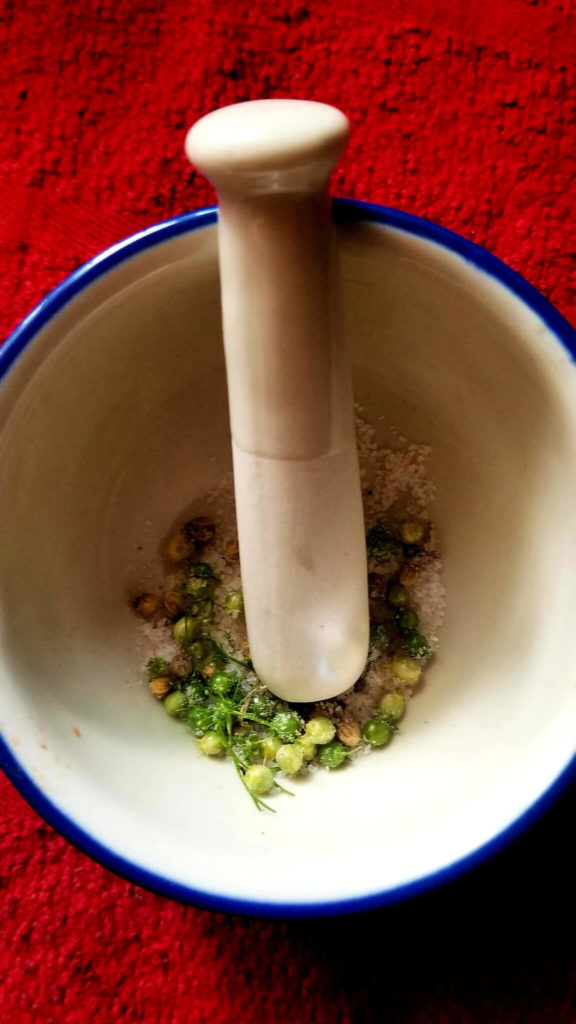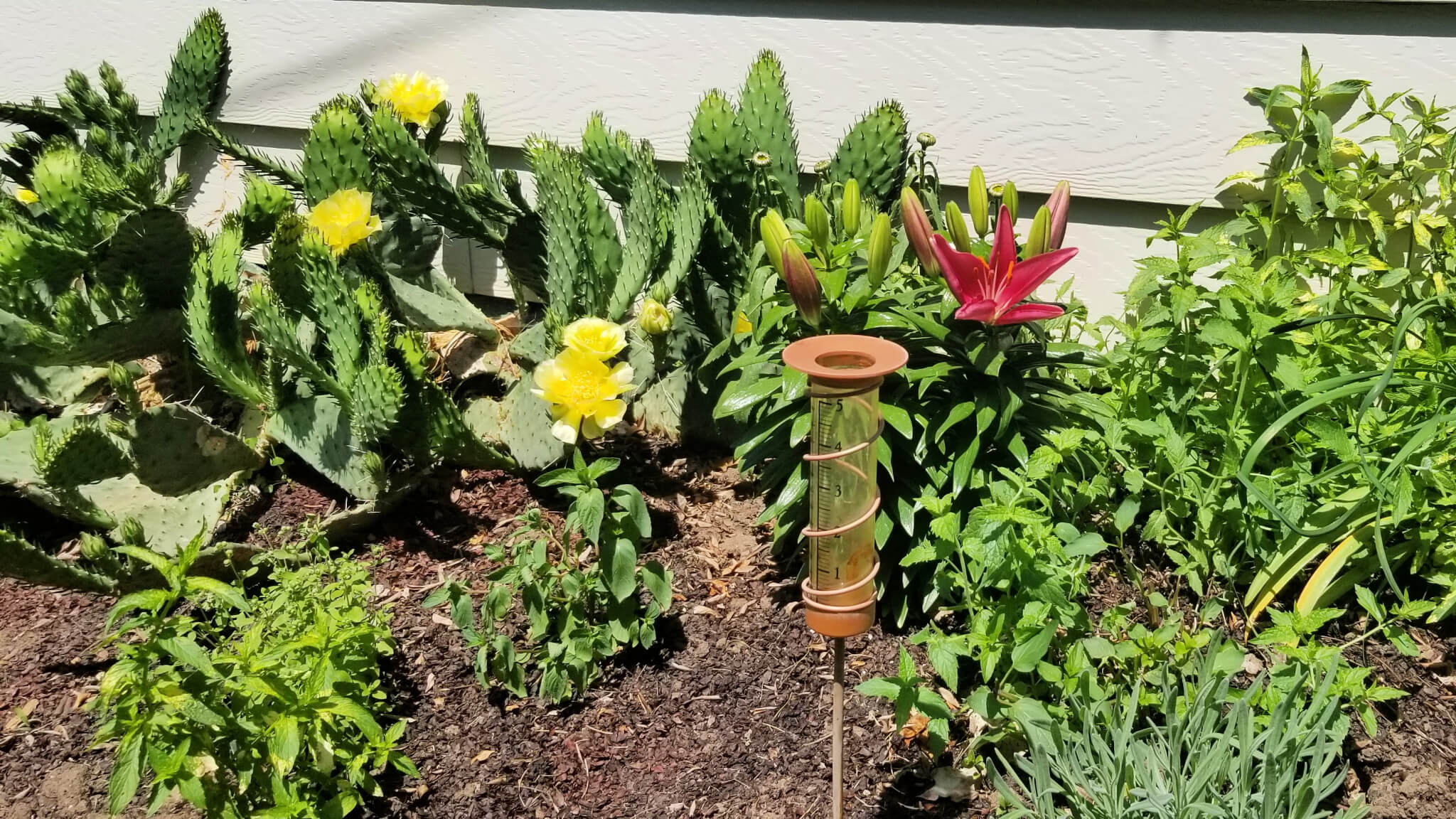Let’s talk about herbs in kombucha flavors
Imagine a sunny July weekend. You are prepping kombucha bottles for flavoring, and you seek inspiration. You have fresh fruit on hand thanks to the season, but want to experiment. Walk out to your garden or container pots, and help yourself to a true homemade kombucha experience.
Nothing amps up the complexity of a kombucha fruit flavor like a fresh herb. Look to delicious and popular retail brewers with flavors like Blood Orange Mint and Lavender Chamomile for inspiration.
Just snipping a few leaves in each bottle’s F2 stage will produce an extra kick you’ll love. Plus, the reward of growing your own plants is a unique benefit of becoming more self-sufficient.
As you plan your summer garden, consider investing in seeds and well-draining pot containers to enjoy easy access to herbs for months, even years!
I live in Zone 5, therefore the guidance listed below is specific to my area.
Cilantro
Growing cilantro from seed in pots, or in a garden, is quick and easy. Make sure you have a sunny location with healthy drainage. Sown seeds should germinate in about 10 days.
To save even more, let a few plants go to seed in the fall, and use the dried seeds – aka coriander – as a seasoning whenever called for in recipes, like enchilada sauce. With just a little more extra effort, you can also keep some dried seeds in ventilated jars to plant next year.

Fresh-ground coriander is an aromatic experience!
Cilantro contains vitamin C and has antioxidant health benefits, in addition to being a super addition to fresh salsa. Cilantro also gives kombucha a fun, summery kick. I like it best with a fresh cherry tomato from my garden. It also pairs well with pineapple, cucumber, or ginger.
Refreshing Cilantro Ginger Lime Recipe
Add the ingredients per bottle at the F2 stage.
- A squirt of local honey (~1 tsp)
- 1 handful of cilantro leaves (~2tbsp)
- A couple chunks of fresh ginger (~2 tbsp)
- A healthy lime squeeze (~ ⅛ tsp fresh juice)
- Throw in some hibiscus petals if you want to be extra sassy!
Basil
Basil, historically thought to protect people from evil spirits, is easily grown in pots or garden. There are numerous variations of seeds to experiment with including purple and variegated leaf basils. I think the big ‘ol green, traditional basil is best to cook with and utilize, but I always plant a couple of purple plants for fun. Basil is good for digestion and also has antioxidant benefits. Newly-picked basil leaves pair best with pineapple or fresh strawberries in my experience.
Strawberry Basil Recipe
Add the ingredients per bottle at the F2 stage.
- 3 healthy basil leaves
- ~1/4 cup strawberries, chopped
- Fresh berries are best, but frozen come in a close second
Mint
I enjoy a patch of peppermint and spearmint that come back every year on the sunny side of the house. Visit your favorite nursery for established mint plants, or ask a friend for a cutting to root.
To use mint in your kombucha, snip a couple shoots with clean garden shears. Rinse the mint with water, and tie the bunch with a rubber band or cotton string, hanging upside down to air-dry.
Add fresh, or dried leaves to any fruity recipe. Juicy peaches, raspberries, blueberries, and melons are well-accompanied by mint.
Melon Mint Recipe
Add the ingredients per bottle at the F2 stage.
- Fresh mint leaves, removed from stem (~1 tbsp)
- ~1/4 cup melon, chopped
- Try any variety: honeydew, cantaloupe
- A squirt of honey (optional)
- A tiiiiny dash of pink Himalayan salt (optional)
Rosemary
A sprig of fresh, or dried, rosemary hits well with fresh orange and cranberry syrup. Rosemary is also known to alleviate muscle pain, improve memory, boost the immune and circulatory system, and promote hair growth.
Rosemary Orange Recipe
Add the ingredients per bottle at the F2 stage.
- A squirt of local honey (~1 tsp)
- 1 small sprig rosemary
- Keep the stem intact
- 2 sections of fresh navel orange, chopped
Chamomile
Pluck the tiny white flowers each morning and dry in a basket throughout the summer. Add a few dried flowers to the flavoring process for a deep, almost-vanilla-like taste and sedative effect.
Good companions to dried chamomile flowers in kombucha are lavender, cherry, honey, and rosemary. Chamomile will often reseed itself, so new plants may come up again in your garden at no cost to you. Thanks, Mother Nature!
Sleepytime Kombucha Recipe
Add the ingredients per bottle at the F2 stage.
- 2 squirts of local honey (~2 tsp)
- 1 tsp dried chamomile flowers
- 1 tsp dried lavender flowers
- 1/2 tsp lemon juice

Dry chamomile flowers in an airy basket
Conclusion
Of course, there are many more herbs out there waiting for you to try. This summer, I look forward to experimenting with calendula.
If you have the space and proper environment, consider planting your own fruit, herbs, and vegetables, too. Fresh raspberries, strawberries, and blueberries can be enjoyed in season, as well as frozen for future use.
Tomatoes, jalapeno peppers, and cucumbers are all good flavor additions to try in your kombucha, as well, so don’t be shy — you’ll have fun!
